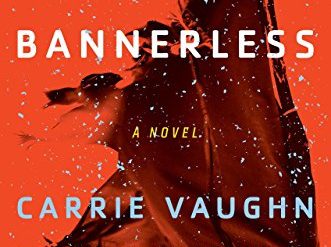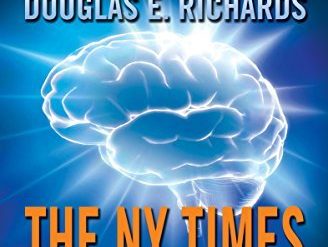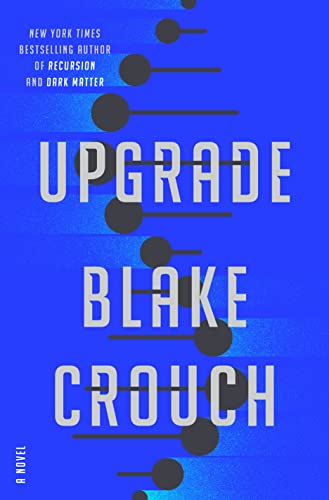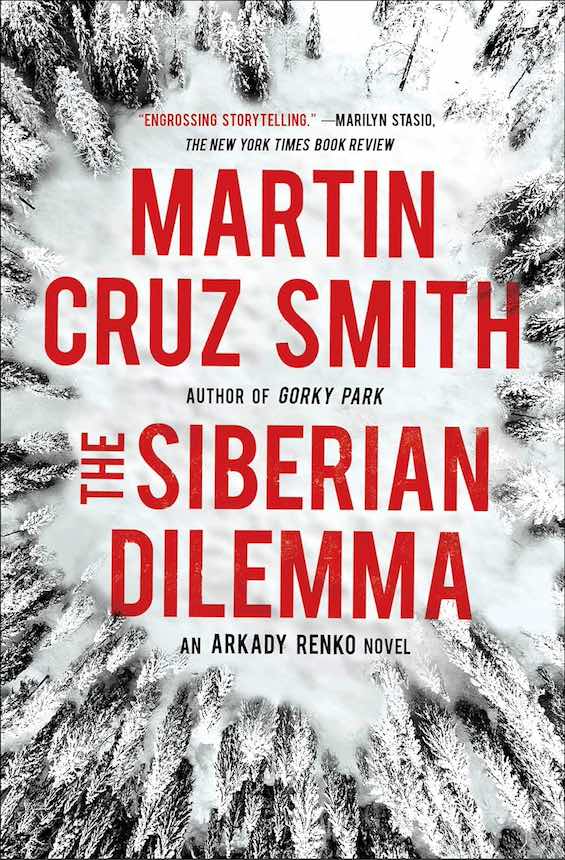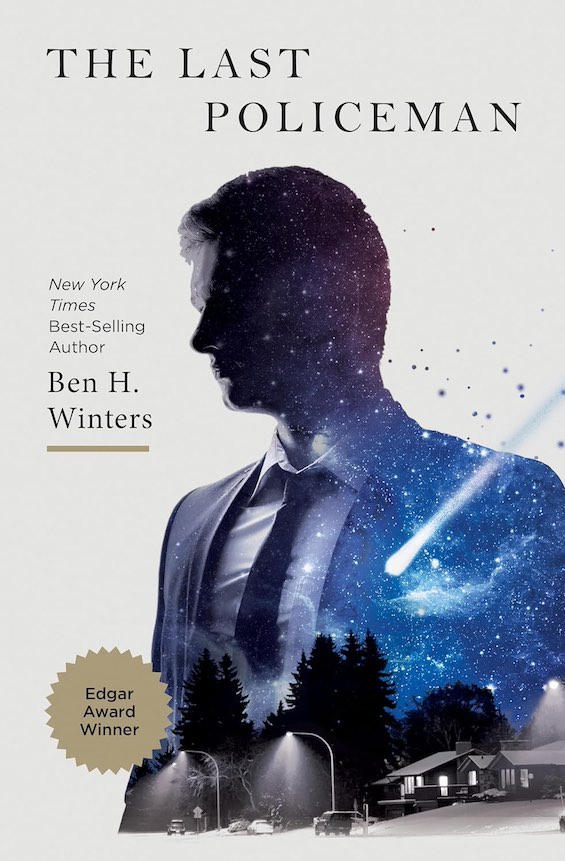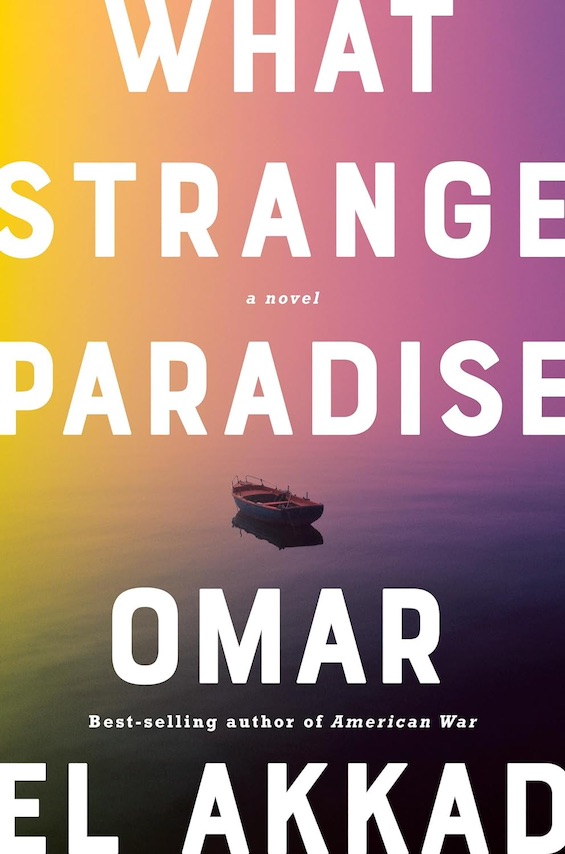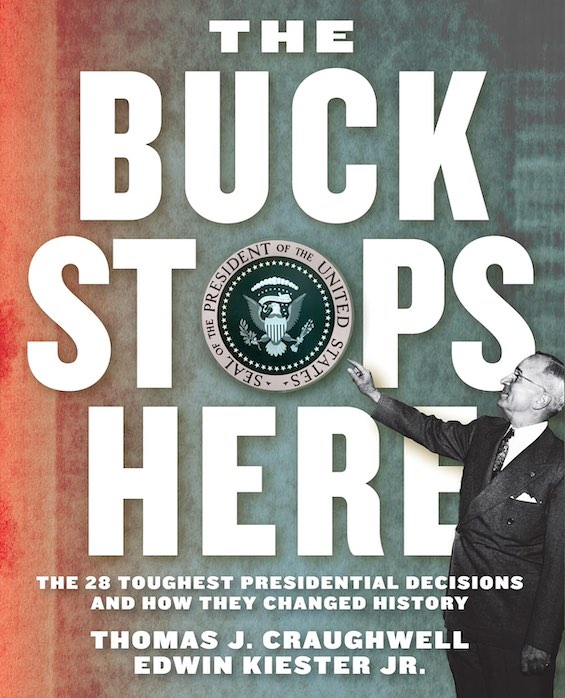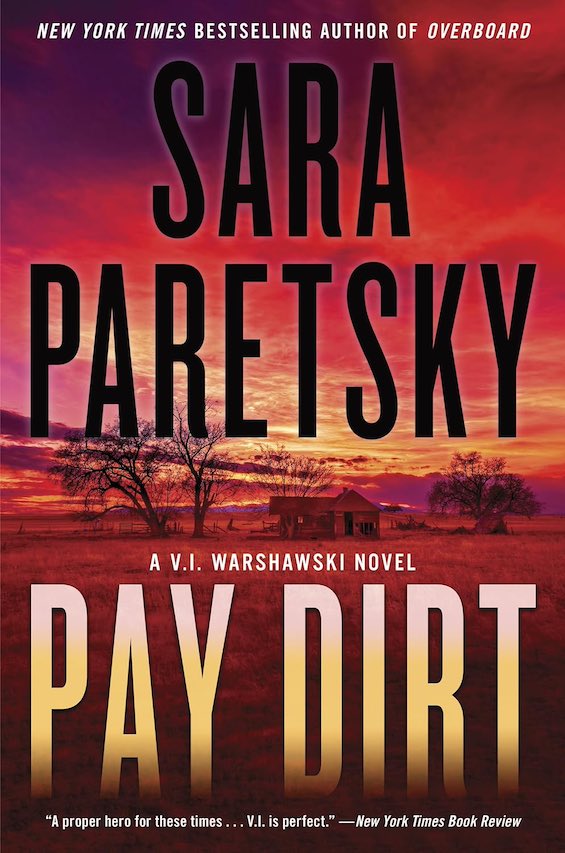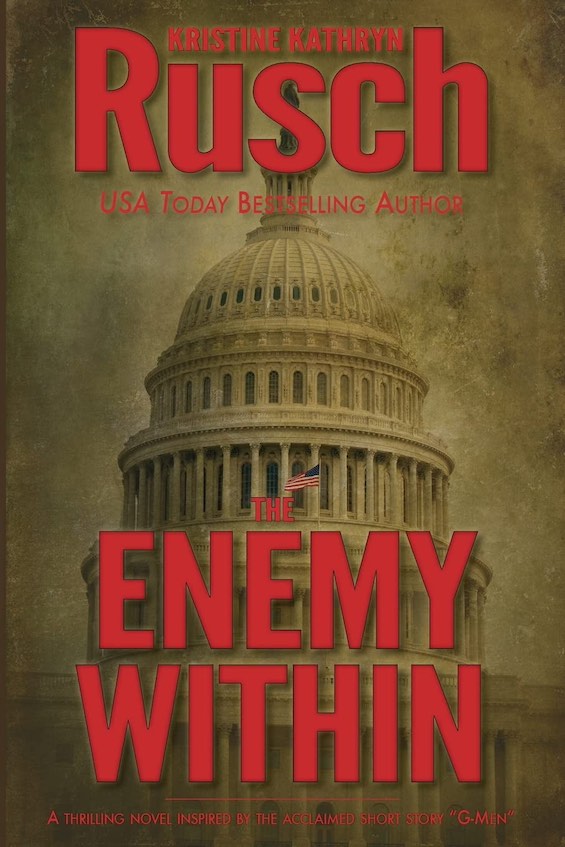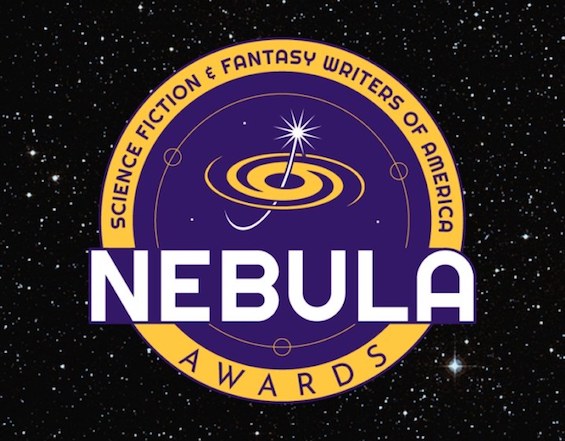
Most literary awards celebrate a mixed bag of fiction that runs the gamut from pretentious and unreadable to spellbinding. But that tends not to be the case with science fiction. The Hugo Award, conferred annually by members of the World Science Fiction Convention (“Worldcon”), understandably leans toward stories that attract the younger folks who predominate in fan ranks. Whatever else the books may be, they’re typically readable.
Estimated reading time: 21 minutes
By contrast, the Nebula Award, the prize offered each year by SFWA (the Science Fiction and Fantasy Writers of America), frequently veers toward fiction of a more literary bent. Occasionally, however, both awards go to a single work in a given year. And those stories frequently display the highest aspirations of both groups of readers.
This post was updated on February 25, 2024.
A half-century of awards in the genre
Since the Nebula Award for Best Novel was first awarded in 1965—the Hugo had been granted for a decade by then—26 novels have met the test of both audiences. Some, including such classics as Dune, are well known. Others are less familiar to a casual fan of the genre. However, nearly all of them remain highly readable even many decades after their publication.
Of the 26 joint winners of both prizes for best novel, I’ve read 12 since I began posting reviews online in 2010. I plan to read or re-read as many of the others as I can that qualify as science fiction rather than fantasy. And of course I’ll review those as I make my way through the list. For the time being, though, I’m including here the 12 for which I’ve already posted reviews (and a 13th for which I haven’t). They’re arranged below in chronological order by the novels’ date of publication. Each title is followed by a link to my full review.
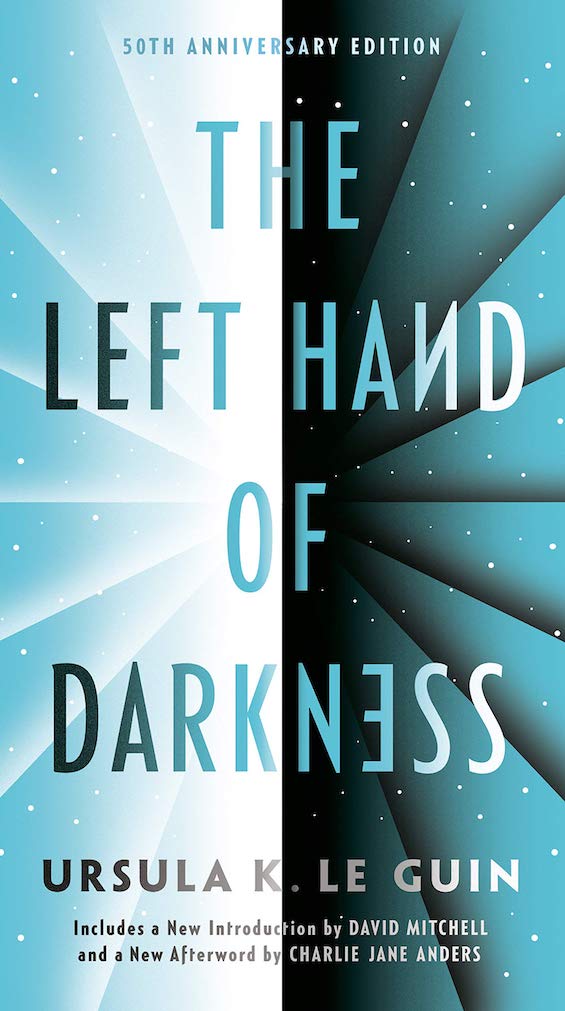
The Left Hand of Darkness (Hainish Cycle #4) by Ursula K. Le Guin (1969) 286 pages ★★★★☆ – Ursula Le Guin’s classic gender-bending novel
When the names of the great science fiction writers of the past are mentioned, the list invariably includes Isaac Asimov, Robert A. Heinlein, and Arthur C. Clarke. Often, it stops there. Of course, they were the first of the lot to gain popularity beyond the boundaries of the genre during the field’s Golden Age, and their names are attached to some of the works now considered classics in the genre. But Ursula Le Guin, whose first book was published in 1968, two decades after the famous trio launched their careers, was a far better writer than any of them. And she proves that in her classic gender-bending novel, The Left Hand of Darkness.
Le Guin’s work is characterized by elegant prose and is both thoughtful and deeply felt. (She was also a widely published poet.) Le Guin won numerous awards to prove her popularity and her acceptance both by science fiction fans and by her fellow professionals. Twice, novels she wrote won both the Hugo and Nebula Awards, the top prizes in the field. The Left Hand of Darkness was the first of those, and it may be the best of her work. Read more.
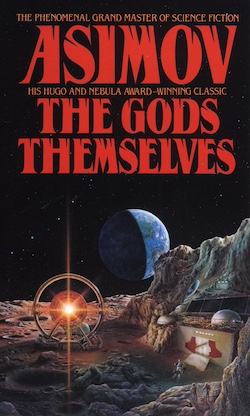
The Gods Themselves by Isaac Asimov (1973) 305 pages
After reading the publisher’s description and the first two pages of this novel, I was unable to go further. The premise is preposterous. And Asimov, though clever, was never a good writer. Enough said.
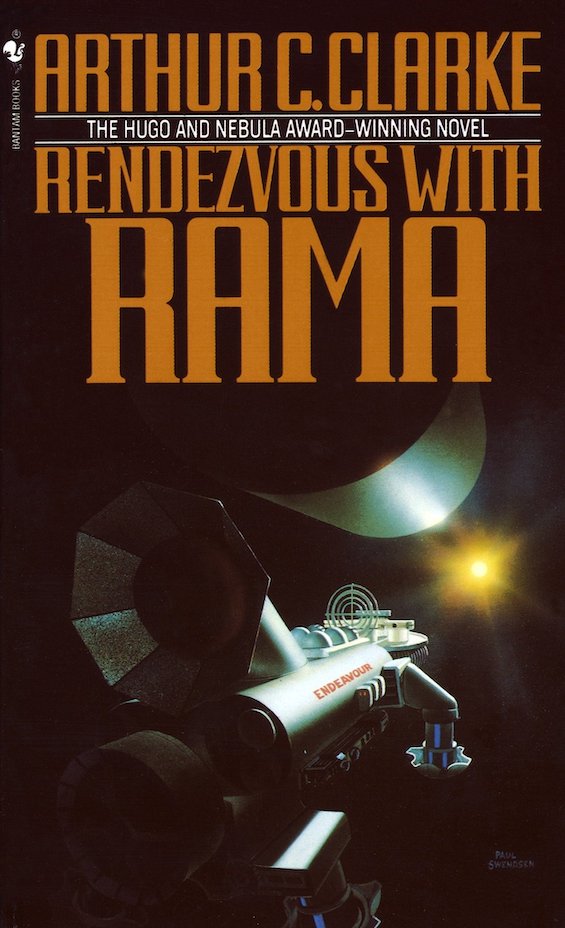
Rendezvous With Rama by Arthur C. Clarke (1973) 288 pages ★★★★★ – Arthur C. Clarke’s believable First Contact novel
Rendezvous With Rama is one of a handful of novels that’s most likely to be found on any list of science fiction classics. Though the book was published in 1973, it’s well worth reading today. The story successfully creates a profound sense of awe that reflects a truly imaginative view of how alien intelligence might manifest itself. Unlike the bug-eyed monsters of the old space operas, the First Contact with intelligence in Rendezvous With Rama is actually believable.
The story is simple enough. By 2130, the human race had colonized the inner planets of Mars and Mercury and the larger moons of the gas giants. Because of a near-catastrophe in 2077, astronomers had mounted an intensive search for asteroids that might threaten human settlements. Then a curious traveling object appeared on a trajectory for the sun. Dubbed Rama, what seemed at first an asteroid is soon identified as an artificial construction. It’s a cylinder, with half-spherical caps on either end. The ship Endeavor is sent to investigate. “The long-hoped-for, long-feared encounter had come at last. Mankind was about to receive the first visitor from the stars.” Read more.

The Forever War (Forever War Trilogy #1) by Joe Haldeman (1974) 292 pages ★★★★★ – This classic science fiction war novel won both the Hugo and Nebula
Joe Haldeman’s classic science fiction war novel, The Forever War, appears on most lists of the all-time most popular stories in the field. When it was published in 1974, the Vietnam War was winding down. Haldeman had fought in the conflict and was badly wounded there. At the time, a dozen publishers rejected the novel because, as Haldeman reveals in an Author’s Note at the front of the Kindle edition of the novel, “‘nobody wants to read a science fiction novel about Vietnam.'”
Today, the parallel between the Vietnam War and Haldeman’s story is difficult to see. The Forever War could be no war in history, or every war. “It’s about Vietnam because that’s the war the author was in,” Haldeman writes. “But it’s mainly about war, about soldiers, and about the reasons we think we need them.”
The Forever War opens in the 1990s, a period that seemed far off when the book was published. But the time quickly advances far into the future as a result of the time dilation explained by the Theory of Relativity. Haldeman posits travel at near light-speed through portals in space-time that are most commonly called “wormholes.” He generally refers to them as “collapsars,” which are the super-dense product of supernovae. This is the mechanism through which Haldeman can portray his protagonist, William Mandella, fighting in an interstellar war with an alien race called Taurans over the course of many centuries. Read more.

Gateway (Heechee Series #1 of 5) by Frederik Pohl (1977) 313 pages ★★★★☆ – A classic novel of space exploration
Over the quarter-century from 1977 to 2004, Frederik Pohl published the five novels and many short stories that comprise the Heechee Saga. The Heechee are a long-vanished alien race that spread far and wide into the universe. They left behind in the solar system a scattering of artifacts and thousands of tiny starships capable of faster-than-light travel. Set in our future, the stories explore how humans gradually reach out into the universe using Heechee technology—often dying in the process. In Gateway, the novel that launched the Heechee series, Pohl introduces us to the two hollowed-out asteroids where the starships are based and to the adventurous men and women who risk their lives to survey the outermost reaches of the galaxy and beyond.
For Robinette (Bob) Broadhead, exploring the universe is all about money. He’s not alone. Hundreds of prospectors make their way to Gateway, where the Heechee had berthed most of their ships. They come in hopes of scoring a fortune in bonuses and royalties offered by the Gateway Corporation for the bits of technology they uncover near distant stars. The odds against them are great. Roughly two out of every three Heechee ships that leave Gateway never return—or arrive with everyone dead onboard. But prospectors are desperate. For many, like Bob, the goal is “full medical” that will keep them youthful and healthy for decades to come at any age they desire. But that comes at a steep price only a fortune in the millions can command. Read more.
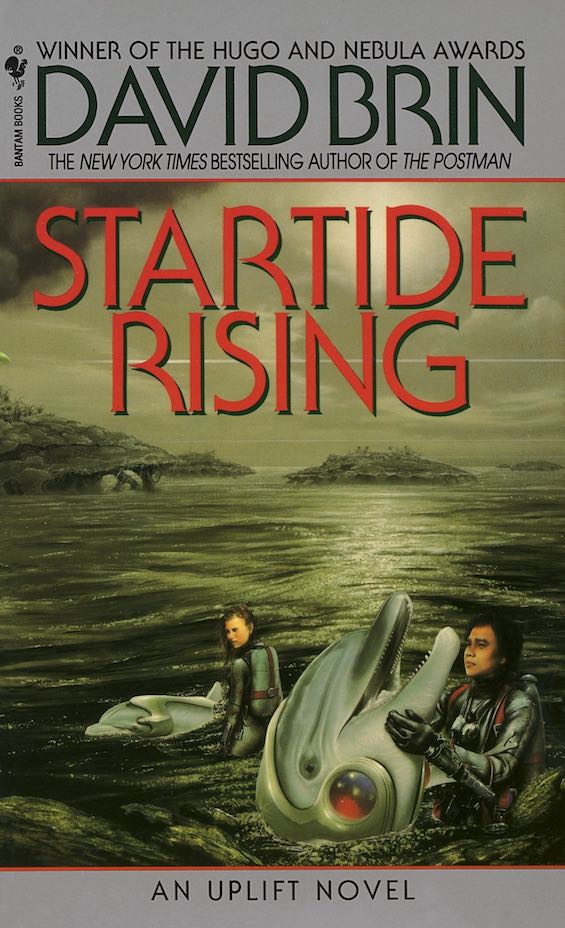
Startide Rising (Uplift #2) by David Brin (1983) 515 pages ★★★★★ – Life in the Uplift Universe is endlessly fascinating
Ask dedicated science fiction fans to name the best-known series in the genre, and they’re likely to think first about those that have been adapted to the screen. Isaac Asimov’s Foundation series, for example. The Hunger Games. The Expanse. But I’ve found that others, though less widely known, are better. I think of the Vorkosigan Saga by Lois McMaster Bujold, Becky Chambers’ Wayfarers series, and—now that I’ve finally read one of the books—David Brin’s award-winning Uplift novels. Startide Rising, the second book about life in the Uplift Universe, is frequently listed among the best science fiction novels ever written. And, yes, it’s that good.
The concept of Uplift is central to the stories in the series. The premise is that we live in a universe teeming with intelligent life. But most species in the Five Galaxies attained sapience not through evolution, or at least not exclusively that way. Instead, they were “uplifted” by a patron species from a starfaring race and thus became their clients, forced to do their bidding. Earth, it appears, is the sole exception. Here, homo sapiens evolved through natural processes. But we humans then proceeded to institute our own home-grown form of uplift, using genetic engineering and selective breeding to welcome dolphins and chimpanzees into the ranks of our planet’s sophonts. And when starships piloted by humans and dolphins reached for the stars, homo sapiens thus became the youngest patron race in the Uplift Universe, with dolphins and chimpanzees our clients. Read more.
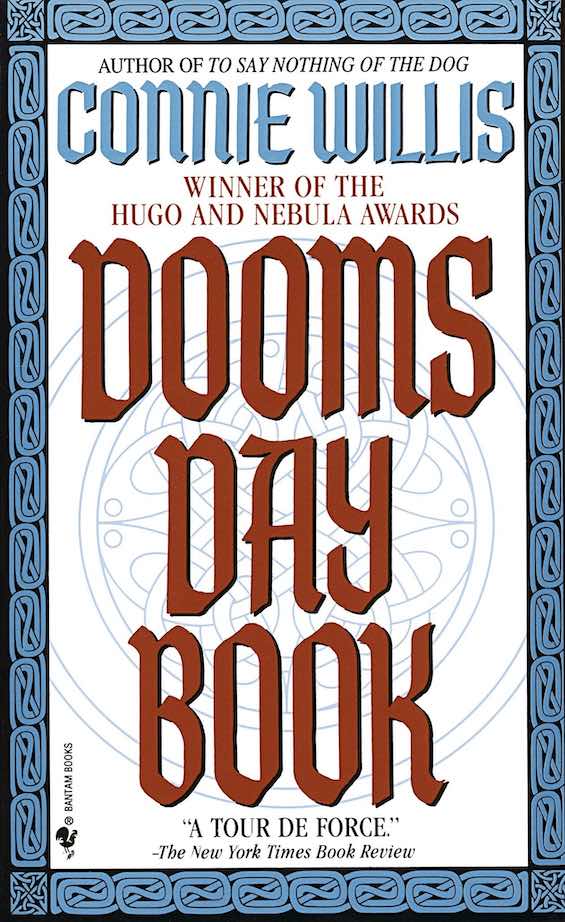
Doomsday Book by Connie Willis (1992) 592 pages ★★★★★ – A time-travel novel about the Black Death
What do we know about the past, and how do we know it? Historians rely largely on the contemporaneous written records they call primary sources. But other disciplines make important contributions to history as well, including archaeology, physics, and genetics. Still, what they learn comes exclusively from what remains of the past. What if historians could learn first-hand by sending scholars into previous centuries to compare the historical record to the reality? Award-winning author Connie Willis explores that idea in her monumental 1992 science fiction tale, Doomsday Book, a novel about the Black Death.
Kivrin Engle is a bright and adventurous first-year student in medieval history at Oxford’s Brasenose College. In the mid-21st century, time travel is well established as a method for historians to study conditions over the past four or five hundred years. But Kivrin is eager to explore 14th-century England, much further back in time than anyone has previously gone. Together with the acting head of medieval studies, Mr. Gilchrist, and her history tutor at Balliol College, Mr. Dunworthy, she develops a plan for a two-week visit in 1320. Her target is the village of Skendgate, near the city of Bath in the country’s far southwest. Unfortunately for all concerned, everything goes wrong when Kivrin sets out for the past. Read more.
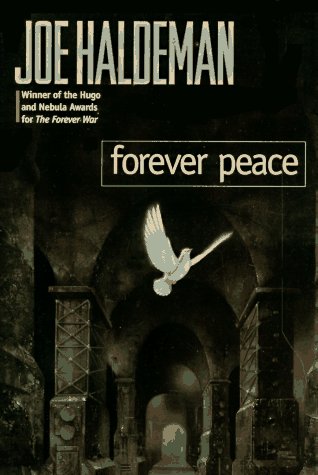
Forever Peace (Forever War Trilogy #2) by Joe Haldeman (1997) 360 pages ★★★★☆ – A prescient look at the military of the future
Visions of future warfare abound with horror stories about robot soldiers. Ranks of Star Wars stormtroopers march through our eyes as we think the unthinkable of war conducted by proxy, with human operators located at great distance from the front lines like the men and women who pilot Reaper and Predator drones from a secure location in the Nevada desert. Joe Haldeman, author of The Forever War, the most storied war novel in science fiction history, offers a somewhat different take in Forever Peace, a sequel that’s not a sequel to his multiple award-winning novel. In his tale of automated mid-twenty-first century war, robots do go on the front lines, but their human operators are bodily and mentally integrated through brain-computer interface technology. Read more.
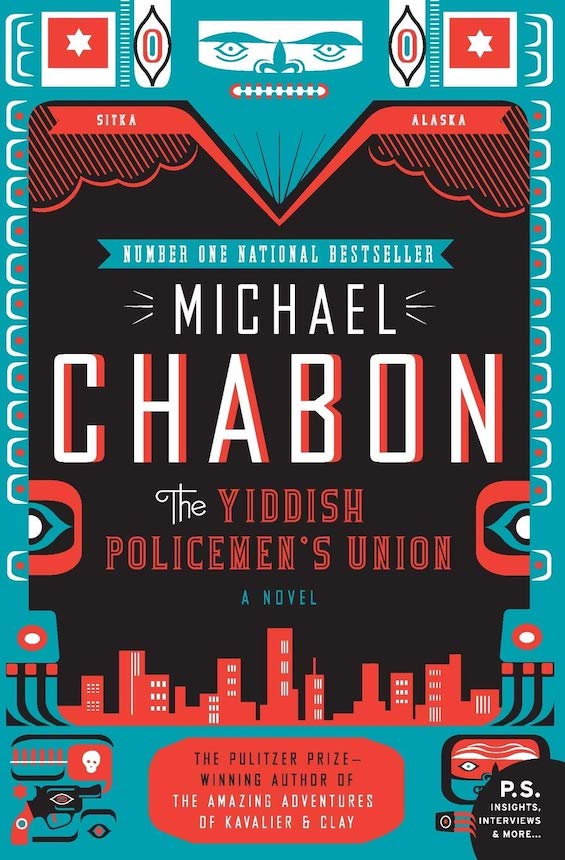
The Yiddish Policemen’s Union by Michael Chabon (2007) 468 pages ★★★★☆ – A novel about Jewish cops, Jewish mobsters, and the Messiah
There’s a lot of Yiddish in this novel. Because it’s mostly a story about Jewish cops, Jewish mobsters, and the Messiah. But it’s also about the Indians of southeast Alaska, the Tlingit. And there are a few WASPs thrown into the mix as well. They all converge in and around the metropolis of Sitka, Alaska, which has gained a Jewish population of 2.3 million in this fanciful alternate history. But that’s another story. A long one. And such a story it is!
So, here’s the scoop. “Meyer Landsman is the most decorated shammes in the District of Sitka.” (The term shams connotes a sexton in a synagogue, but in Yiddish vernacular it means a cop.) But Landsman is a mess, mourning his divorce from Bina Gelbfish, his wife of eighteen years, and the death of his beloved sister, Naomi, who crashed her Piper Super Cub into a mountainside. Landsman has been living, or rather existing, for the past nine months in a dilapidated residential hotel called the Zamenhof. He’s also drinking a lot.
One night the manager wakes Landsman up with the news that one of his fellow residents has died. The body belongs to an older man who appears to have committed suicide. But Landsman isn’t convinced it’s suicide. And he’s deeply puzzled by the lack of any identification or any leads to the man’s identity. This puzzle will take weeks of investigation to unravel. And by the time Landsman solves it, all hell is breaking loose. Those Jewish mobsters I’ve alluded to have got something up their sleeve. Oh, and the Messiah gets into the act, too. Read more.
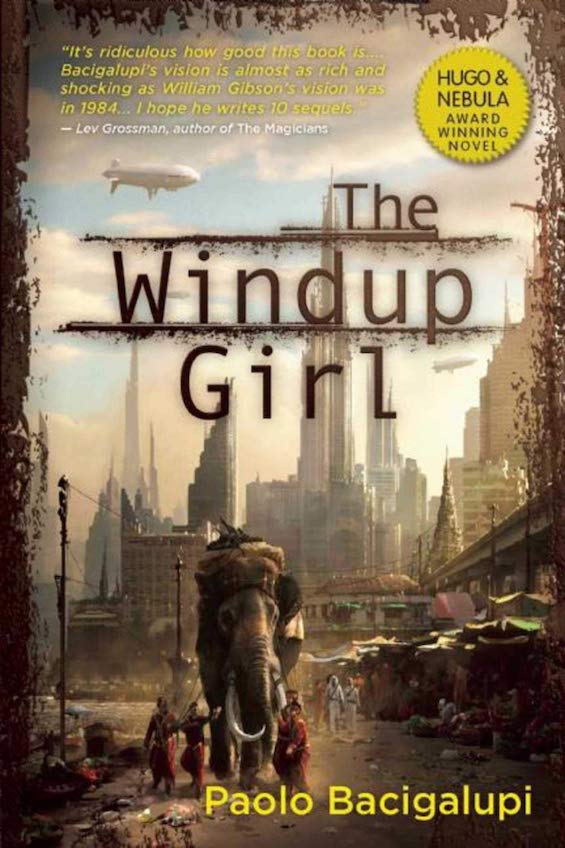
The Windup Girl by Paolo Bacigalupi (2009) 378 pages ★★★★★ – A frightening novel about bioengineering gone wild
The action takes place in Bangkok sometime in the 23rd century. In the past, the oceans have risen twenty feet or more, and the city survives only because a visionary Thai king has built an enormous seawall, dikes, and pumps to hold back the waters of the annual monsoon. Genetic engineering has run amok around the globe, and the Thai Kingdom is one of few countries, perhaps the only country, still resisting the “calorie companies,” powerful food-exporting corporations headquartered in the American Midwest and in China. They’ve killed off virtually all traditional sources of food—and hundreds of millions of people—with genetically engineered plagues to increase their leverage in the market. Now the calorie companies hungrily eye Thailand and its own independent success in creating new fruits and nightshades capable of resisting the ubiquitous plant-killers.
In this grim environment, so long removed from the 21st century, one character “wonders if it was really better in the past, if there really was a golden age fueled by petroleum and technology. A time when every solution to a problem didn’t engender another.” Read more.
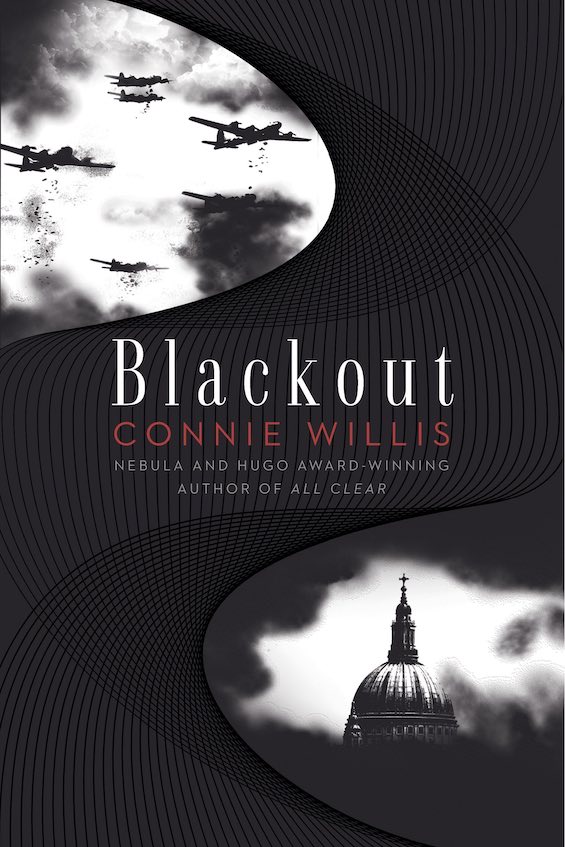
Blackout (Oxford Time Travel #4 of 5) by Connie Willis (2010) 650 pages ★★★★☆ – Historians study World War II in person
History is often an unreliable guide to the past. Documents go missing or remain classified. Records may be erroneous—or even have been written to be misleading. And historians inevitably build their own prejudices and expectations into their interpretation of past events. How extraordinary it might be, then, for an historian to travel back in time and observe those events in person as they unfold. That’s the conceit at the heart of Connie Willis‘ award-winning novels about mid-21st century Oxford historians who do exactly that. Blackout is the first of a pair of those novels that trace the adventures of three young historians as they travel in time to study World War II as it happened.
Technically speaking, Blackout is only half of a very long novel. Willis wraps up the story in All Clear, which was published a few months later. The two volumes together won both the Hugo and Nebula Awards. In a sense, then, they constitute a series of their own. But they conclude the saga of the Oxford time travelers, a series that all together consists of five books. If we count Blackout and All Clear as two novels, then three of the five books in the series won both the Hugo and the Nebula. Which surely must make it the most honored series in science fiction. Read more.
All Clear (Oxford Time Travel #5 of 5) by Connie Willis (2010) 650 pages
A few chapters into this sequel to Blackout, I simply gave up. Several weeks had lapsed since I’d read the first half of this 1,300-page novel, and I found it difficult to remember all the many characters in the story or what they meant to one another. The story, too, had become tedious, with historians stranded in the past and fretting, sometimes to the point of hysteria, about “slippages” and “discrepancies” that represented divergences from the historical record. I couldn’t take it anymore. Blackout had the virtue of exploring historical events from an intimate perspective. In All Clear, however, the story (at least at first) seemed to be exclusively about the relationships among the historians themselves, none of which struck me as interesting.
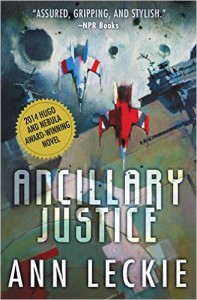
Ancillary Justice (Imperial Radch #1) by Ann Leckie (2013) 266 pages ★★☆☆☆ – Why did this peculiar book win both the Nebula and Hugo Awards?
Ancillary Justice by Ann Leckie was the first novel ever to win the Hugo, Nebula, and Arthur C. Clarke Awards. I’m trying to figure out why.
Let’s see if we can suss out what’s going on in the story. For starters, every character is referred to as “she” or “her” regardless of whether they have male or female characteristics (or both). This makes it exceedingly difficult much of the time to figure out who’s saying what to whom. It caused me to reread whole pages not just once but many times.
The protagonist — or, as it would appear at the outset, two protagonists, each relating “her” story in the first person—is either Justice of Toren (a troopship holding thousands of soldiers) or one segment or “ancillary” of “Ship,” the artificial intelligence (AI) that sees all, knows all, and enables telepathic communications among all its thousands of ancillaries on board and in action on the ground. And, by the way, those ancillaries are “corpse soldiers,” human beings who were stashed away in cold storage for as long as a thousand years before being thawed out and linked through implants to the AI. There are also human soldiers, but that’s another story. And they’re all under the command, though not the control, of human officers, practically all of whom are Lieutenants. Got it? No? Read more.
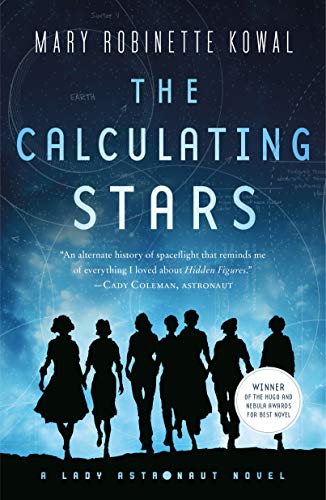
The Calculating Stars (Lady Astronaut #1) by Mary Robinette Kowal (2018) 432 pages ★★★★★ – This novel shows just how good hard science fiction can be
The Calculating Stars introduces Dr. Elma Wexler York, a mathematical genius with doctorates in physics and math from Stanford University. Elma had gone to high school at age eleven and to Stanford at fourteen. She’s the anxiety-ridden daughter of a Jewish Army general. She works as a computer at the National Advisory Committee for Aeronautics, or NACA. (In those days, “computers” were people, not machines, and most of them were women. Using paper, pencil, and adding machines, they wrote the equations for the ballistics calculations used in artillery and, later, in missiles and rockets.)
And, yes, you read that right. It’s NACA, not NASA. Because the novel is set in the 1950s and NASA had yet to be established. (NACA was its predecessor.) But this is an alternate history of the United States—and the planet. Tom Dewey had defeated Harry Truman in 1948. He has taken advantage of Wernher von Braun and the other former Nazi rocket engineers whisked away to the US. So, Dewey has jump-started the space program a decade before John F. Kennedy did so in reality. And Elma’s husband, Nathaniel, is the lead engineer in the rocketry program.
The excitement starts early in The Calculating Stars when a meteorite smashes into the ocean off the mid-Atlantic coast and takes out most of the Eastern Seaboard of the United States. Thus begins one of the very best of the novels that won both the Hugo and Nebula Awards. Read more.
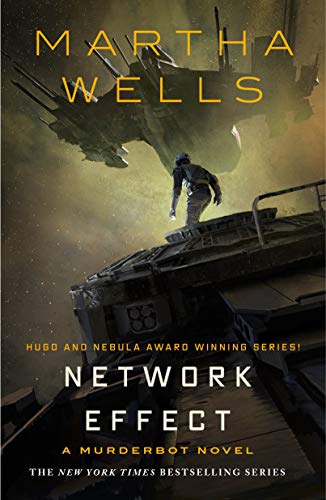
Network Effect (Murderbot Diaries #5) by Martha Wells (2021) (2020) 316 pages ★★★☆☆ – A huge disappointment in the Murderbot series
Network Effect is the fifth of what are now six novels in the Murderbot Diaries, one of the most celebrated series in all of science fiction. Like All Systems Red, the novella that inaugurated the series, Network Effect won both the Hugo and Nebula Awards. Though I enjoyed the first four books in the series, awarding each of them four stars, I was greatly disappointed by the fifth. If I hadn’t promised myself to read and review all the science fiction novels that won both major awards, I would have given up on Network Effect after the first few chapters. And if I were still a full voting member of SFWA, I certainly would not have voted for it on the Nebula ballot.
The book has its good points, of course. It’s funny at times, and occasionally hilarious. The universe in which Martha Wells sets the stories is intriguing. And the character of Murderbot, the protagonist, is beautifully developed. But the action in Network Effect is unrelenting, difficult to follow, and tedious to an extreme degree. Most of it takes place in complex settings that were impossible for me to visualize. As you may be aware, Murderbot is a robot of sorts who has committed mass murder but is doing its best to avoid killing more human beings. Other bots and artificial intelligences? Well, they’re less scrupulous, and Murderbot treats them accordingly. There’s a godawful lot of killing in the story. And it all happens at a speed that only an AI can tolerate. I certainly couldn’t. Read more.
Dual award-winners I haven’t reviewed
If you’ve been paying attention, you know that the list above is far from complete. I intend to flesh it out by reading and reviewing the following two other dual-award-winners:
- Dreamsnake by Vonda McIntyre (1978)
- The Fountains of Paradise by Arthur C. Clarke (1979)
I plan to get to these four novels in the months ahead. Stay tuned.
Long before I began reviewing books online, I read five of the 26 novels that won both major prizes. I may get around to rereading and reviewing one or more of these. But for the time being the following titles are also missing above:
- Dune by Frank Herbert (1965)
- Ringworld by Larry Niven (1970)
- Neuromancer by William Gibson (1984)
- Ender’s Game by Orson Scott Card (1985)
- Speaker for the Dead by Orson Scott Card (1986)
Four of the double award-winners are fantasy, not science fiction. This represents a new trend in the Nebula Awards in the 21st century. Previously, the writers in the genre had always stuck exclusively to SF. (For a time, they even changed the identifier for their organization from SFWA to SFFWA to accommodate fantasy. But they’ve since relented.) I have no patience for fantasy and thus have no plans either to read or review any of these four novels:
- American Gods by Neil Gaiman (2002)
- Paladin of Souls by Lois McMaster Bujold (2004)
- Among Others by Jo Walton (2012)
- The Stone Sky by N. K. Jemisin (2018)
For related reading
For more good reading, check out:
- The ultimate guide to the all-time best science fiction novels
- 10 top science fiction novels
- The five best First Contact novels
- The best time travel novels
- 10 best alternate history novels
- 10 new science fiction authors worth reading
- The top 10 dystopian novels
And you can always find my most popular reviews, and the most recent ones,, on the Home Page.


